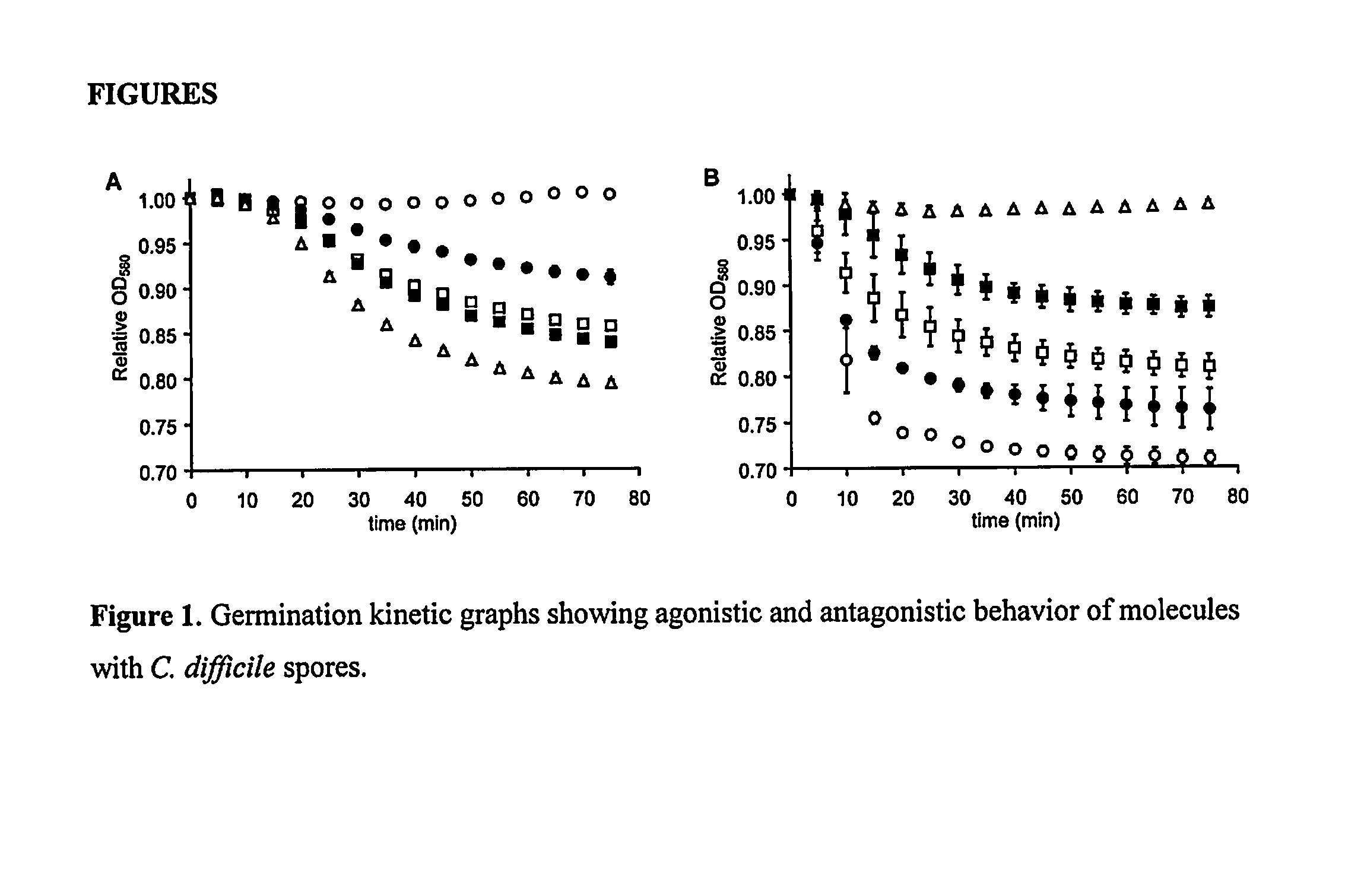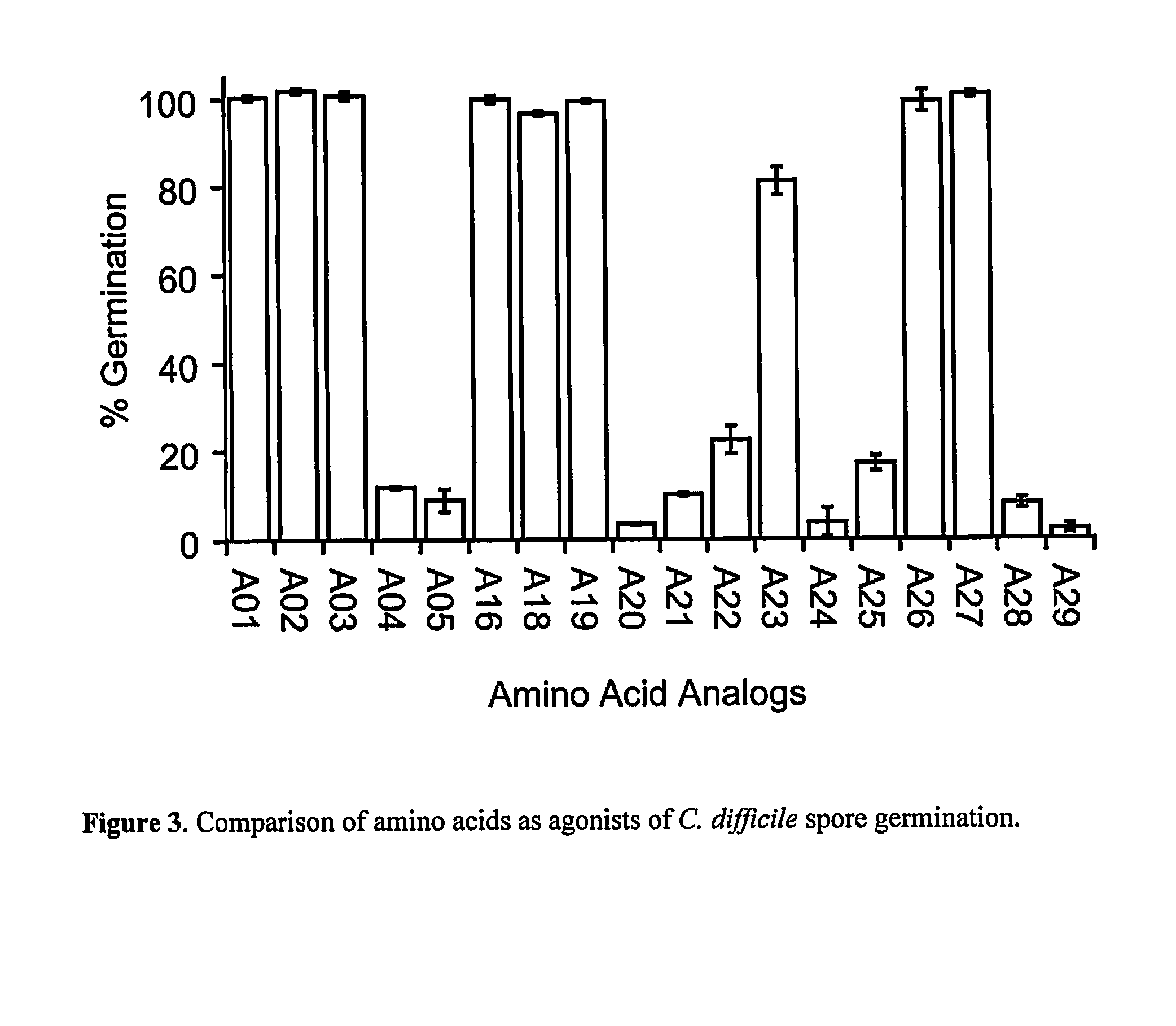Reducing Risk of Contracting Clostridium-Difficile Associated Disease
a technology of clostridium difficile and associated diseases, applied in the field of compound compounds, can solve the problems of 5 deaths, cost of cleanup and decontamination, and many current frontline drugs are completely ineffective in controlling many diseases, so as to reduce the risk of developing clostridium difficile-associated disease and reduce the risk of existing clostridium difficile-associated diseas
- Summary
- Abstract
- Description
- Claims
- Application Information
AI Technical Summary
Benefits of technology
Problems solved by technology
Method used
Image
Examples
examples
Materials and Methods
Materials—
[0127]Taurocholate and amino acid analogs were purchased from Sigma-Aldrich Corporation (St. Louis, Mo.), Steraloids (Newport, R.I.) or were synthesized in the Abel-Santos laboratory. Reagents for synthesis were purchased from Sigma-Aldrich Corporation (St. Louis, Mo.) or Alpha Aesar (Ward Hill, Mass.). Thin layer chromatography silica gel 60 F254 was purchased from EMD Chemicals (Gibbstown, N.J.). Silica gel for column chromatography was purchased from Fisher Scientific (Pittsburg, Pa.),
Synthesis of 3-methoxy-7,12-dihydroxytaurocholate (T09), 3,7-dimethoxy-12-hydroxytaurocholate (T10)
[0128]Methoxylated taurocholate analogs (T09 and T10) were prepared following published procedures (Bandyopadhyay, P., V. Janout, L.-Zhang, and S. L. Regen.[0129]2001. Ion conductors derived from cholic acid and spermine: Importance of facial hydrophilicity on Na+ transport and membrane selectivity. J. Am. Chem. Soc. 123(31):7691-7696). Briefly, to a solution of taurochol...
PUM
 Login to View More
Login to View More Abstract
Description
Claims
Application Information
 Login to View More
Login to View More - R&D
- Intellectual Property
- Life Sciences
- Materials
- Tech Scout
- Unparalleled Data Quality
- Higher Quality Content
- 60% Fewer Hallucinations
Browse by: Latest US Patents, China's latest patents, Technical Efficacy Thesaurus, Application Domain, Technology Topic, Popular Technical Reports.
© 2025 PatSnap. All rights reserved.Legal|Privacy policy|Modern Slavery Act Transparency Statement|Sitemap|About US| Contact US: help@patsnap.com



